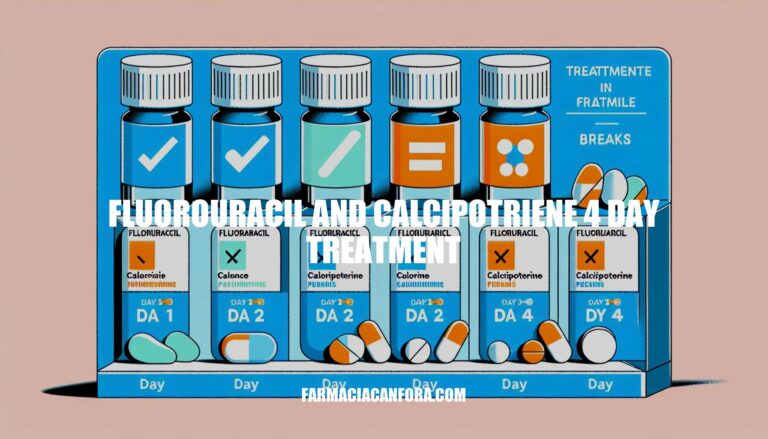


The fluorouracil-and-calcipotriene-4-day-treatment”=”” href=”https://farmaciacanfora.com/<a href=” https:=””>fluorouracil-and-calcipotriene-4-day-treatment-2″>fluorouracil and calcipotriene 4-day treatment is a dermatological therapy designed to target and clear precancerous skin lesions, specifically actinic keratosis. This combination leverages fluorouracil’s ability to destroy damaged skin cells and calcipotriene’s role in activating the immune system, resulting in a more effective and shorter treatment duration compared to traditional methods. This approach not only treats existing lesions but also helps prevent future skin cancer development.
The combination of fluorouracil and calcipotriene works synergistically to treat precancerous skin lesions by leveraging both compounds’ unique mechanisms:
Fluorouracil (5-FU): This chemotherapy drug inhibits thymidylate synthase, an enzyme crucial for DNA synthesis. This inhibition leads to DNA damage and cell death in rapidly dividing abnormal cells.
Calcipotriene (Calcipotriol): This synthetic vitamin D analog induces the expression of thymic stromal lymphopoietin (TSLP), an immune system activator. TSLP stimulates the immune system, particularly T cells, to target and destroy abnormal cells.
Synergistic Effect: When used together, fluorouracil causes DNA damage in abnormal cells, making them more recognizable to the immune system. Calcipotriene enhances this effect by activating T cells, which then attack and eliminate the damaged cells. This combination results in a more robust and efficient clearance of precancerous lesions compared to either compound alone.
The combination of fluorouracil (5-FU) and calcipotriene (a synthetic form of vitamin D) for a four-day treatment has shown significant effectiveness in treating actinic keratosis, a precursor to skin cancer. In a randomized trial, this combination led to an 87.8% reduction in the number of actinic keratoses compared to a 26.3% reduction with the standard treatment using Vaseline plus 5-FU (P < 0.0001).
Patients experienced more redness and burning sensations with the combination therapy, which are consistent with the immune response it triggers. Despite these side effects, the treatment was better tolerated overall and more effective than current practices.
Here are the specific steps and guidelines for administering the fluorouracil and calcipotriene 4-day treatment:
Preparation:
Application:
Post-Application:
Monitoring:
Adherence:
Precautions:
Adherence to this protocol is crucial for the treatment’s success and to minimize side effects.
The fluorouracil and calcipotriene 4-day treatment is a dermatological therapy that targets precancerous skin lesions, specifically actinic keratosis. This combination of compounds works synergistically to destroy damaged cells and activate the immune system, resulting in a more effective and shorter treatment duration compared to traditional methods.
The treatment has shown significant effectiveness in reducing the number of actinic keratoses by 87.8% compared to standard treatments. However, patients may experience redness, burning sensations, crusting, scaling, stinging, and systemic symptoms as side effects.
To manage these side effects, moisturizers, after-sun gel, hygiene practices, and medical attention are recommended. Adherence to the treatment protocol is crucial for its success and minimizing side effects.